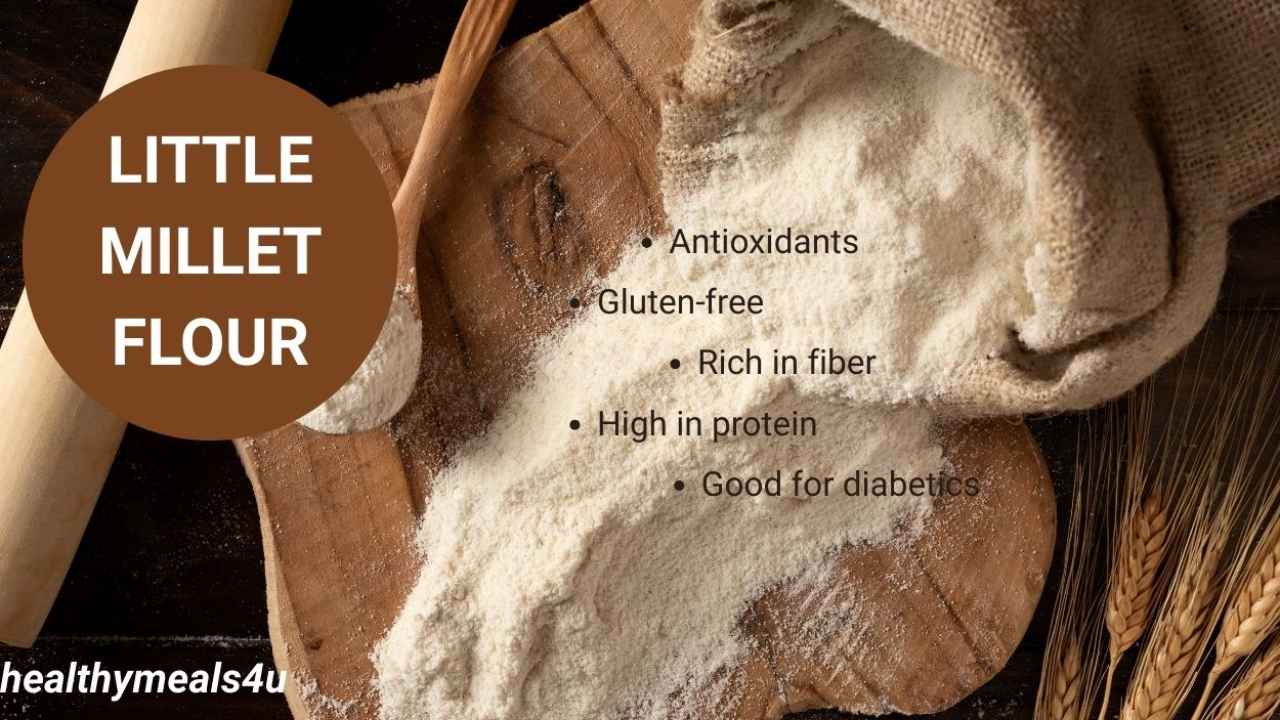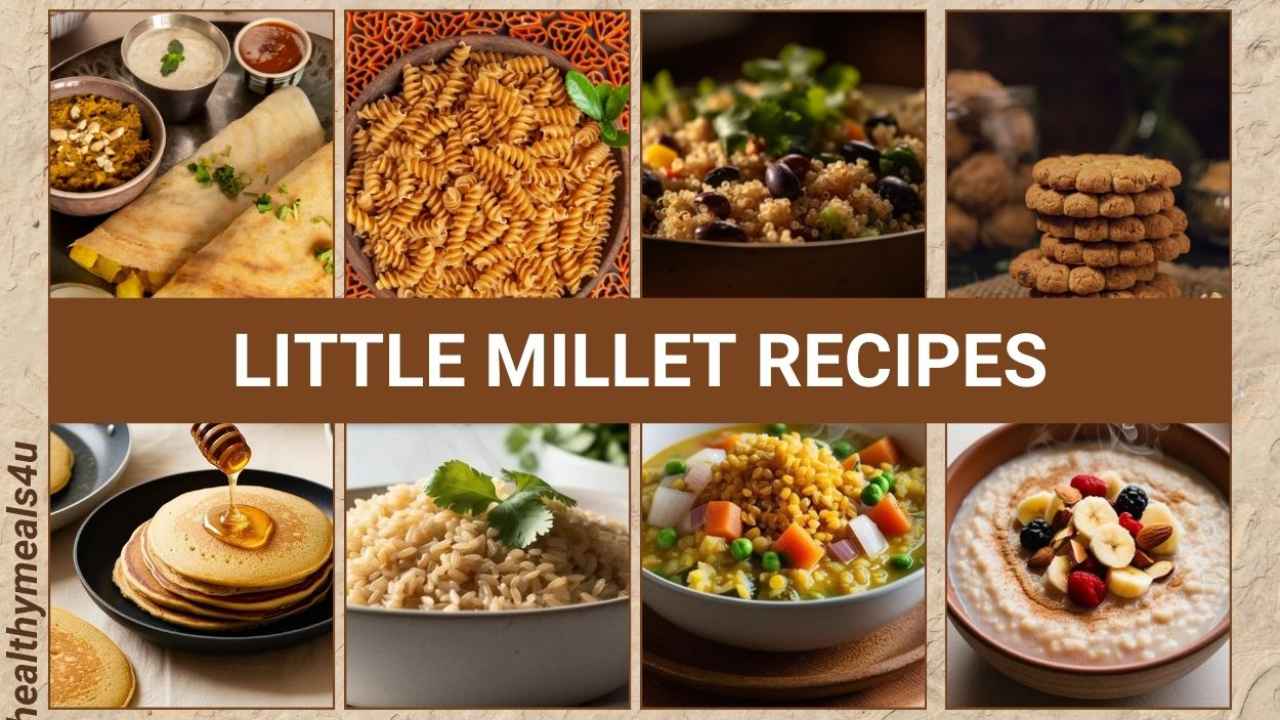LITTLE MILLET
Little millet is an ancient grain that is just starting to be more widely utilised in our kitchens. It is the best thing that has happened in my life after COVID. This tiny grain, called Panicum Sumatrense, was always part of traditional meals in parts of Southeast Asia and India. It is the best option if you are looking for sustainable and healthier alternatives to wheat and polished rice.
Besides being nutritious with a relatively neutral, indifferent flavour and light texture, this is soooo much more than an alternative to rice. It is also a lively, nutritious food that contributes to a healthy, longer life, embodying a balanced way of life.
What is Little Millet?
Little millet is part of the grass family Poaceae and is one of 6 small millets cultivated in India. Farmers love them because they can be grown in poor soils, require less water, mature rapidly, and can be harvested within 60 – 90 days. For hundreds of years, this grain has been a trustworthy crop for smallholder farmers in semi-arid locations and will be critical for the food security of our country in the future.
It is known by several names, such as samai, kutki, saame, chama rice, etc. Food gives nutrients to feed the body and mind, establishing the foundation for our young people to learn and prosper psychologically, emotionally, socially, and physically. Samai has a mild nutty flavour. In traditional contexts, it was consumed in the form of porridge, upma, or a fermented dish, such as idli or dosa. Today, nutritionists and health professionals encourage the use of this ancient grain, which is regarded as a sustainable and nutrient-dense food rather than refined cereals.
Little Millet Nutrition and Nutrition Value
Chama rice has a favourable and diverse nutritional value that compares well with other cereals and places it in a dominant position based on Indian Food Composition Tables (NIN-ICMR) as well as the USDA database.
Nutrient values per 100 g of raw Little millet
Energy | 341 kcal |
Carbohydrates | 67–69 g |
Protein | 7–9 g |
Fat | 4–5 g |
Dietary Fibre | 7–9 g |
Calcium | 17–20 mg |
Iron | 9 mg |
Magnesium | 114 mg |
Phosphorus | 220 mg |
Potassium | 210 mg |
Zinc | 1.6 mg |
Vitamin B1 (Thiamine) | 0.3 mg |
Vitamin B2 (Riboflavin): | 0.1 mg |
Niacin (B3) | 1.7 mg |
Why is it important?
- It has higher fibre than white rice and even wheat, which helps with digestion and fullness.
- The iron and magnesium content is noteworthy as well; it will help with energy production and metabolic processes.
- The complex carbs (polysaccharides) are broken down and release energy slowly, providing sustained fuel without the sugar spikes.
Little Millet Calories
A 100 g serving of little millet has approximately 341 kcal in total. It has the benefits of minerals, fibre, and protein, which enhance the sustainability and usability of energy, in contrast to the “empty” calories present in refined grains like white rice.
Here is a comparison (per 100 g, uncooked):
White rice | 365 kcal | low fibre, low micronutrients |
Wheat | 340 kcal | moderate fibre |
Little Millet | 341 kcal | high fibre, iron, magnesium |
In fact, the calories are fairly similar, but eating small amounts of millet improves the quality of those calories. If you’re searching for something that will satisfy your hunger without causing you to crash, this is why it’s a good alternative!
Glycemic Index of Little Millet
The glycaemic index of little millet is in the low to medium GI level of 45–52, meaning you do not get as immediate a rise in blood sugar as you would from white rice (GI ~70–80). Moreover, published studies on PubMed and reported findings from NIN India revealed that consumption of millets decreases glucose spikes after meals and also improves insulin sensitivity.
It can also benefit individuals with type 2 diabetes or at risk of developing diabetes. To put it simply: Little millet is diabetic-friendly and much better compared to refined carbohydrates.
Little Millet Benefits and Side Effects
Little Millet Health Benefits
- Helps to regulate blood sugar – The absorption of glucose is slowed by its high fibre content and low GI. Supports better insulin response.
- Aids in weight management – Fibre makes you feel full, which makes you eat less in general. Complex carbohydrates offer sustainable energy, providing longer-lasting energy and reducing cravings.
- Good for heart health – Magnesium and potassium help with blood pressure. Fibre will help to lower overall “bad” cholesterol.
- Anti-inflammatory – Antioxidants like natural polyphenols and flavonoids present in millet help to combat oxidative stress. They protect against chronic inflammation and diseases related to lifestyle.
- Naturally gluten-free – For those with gluten intolerance or coeliac disease, this is very safe.
- Good for gut health – The fibre acts to keep gut bacteria in check and may help with constipation.
Little Millet Side Effects
Although this coarse grain is safe for most and greatly beneficial in moderation, there are a few things to consider.
- If consumed in very large amounts, a lot of fibre may contribute to some bloating and/or gas.
- Like every other millet, it contains goitrogens, which may affect how we absorb iodine, so taking millet with iodine-rich sources is a good idea for people with thyroid dysfunctions.
- People susceptible to kidney stones should consider avoiding them in excess, as millets contain slightly higher oxalates.
Little Millet Uses: Culinary
Little Millet Rice

Chama is best enjoyed when cooked like rice. After soaking for a couple of hours, it can be steamed or cooked in a pressure cooker. You just need 10 to 15 minutes to cook them. It works great with Indian curries, sambar, or rasam. Some of the popular recipes include millet pulao, curd rice, and millet biryani. Simple steamed millet rice as a rice substitute is best for a busy and exhausted day.
Little Millet Flour

Grain can also be ground into flour in the comfort of your home in under 7 minutes! Being gluten-free, the flour can be used by itself, or you can mix it with whole wheat. Some popular dishes are soft rotis and parathas, crispy dosas and fluffy idlis, pancakes, breads and even cookies. My favourite is dosa made with the flour mix of millet, ragi, and wheat. This combination offers the best Indian breakfast for diabetics.
Little Millet Recipes

Samai is a highly versatile ingredient in the kitchen! You can use it in lots of different preparations: savoury upma and khichdi, and dessert preparations like kheer and halwa. It adapts to traditional Indian cooking and modern, healthy forms of cooking. I will share my detailed little millet recipes separately.
Little millet demonstrates how some of the smallest grains can make some of the biggest differences in our lives. Not only is it nutrient-dense, easy to digest, diabetic-friendly, and sustainable – it has all the attributes to be the grain of choice for health-conscious eaters.
By substituting refined carbs for saame, you are not only feeding your body but also making choices that account for your long-term health and well-being. Make a healthy change in life.
FAQ
1. Is little millet good for diabetes?
Absolutely! It is an excellent grain option for diabetes, as it has a low glycaemic index (45-52), which helps to manage blood sugar very well.
2. How many calories does little millet have in 100 g?
Raw little millet has 341 kcal, plus protein, fibre and minerals.
3. Can I eat little millet every day?
Yes – that said, it is always the best practice to eat any type of food in moderation. Diversifying your diet is good for better gut health.
4. What are the adverse effects of little millet?
Eating excessive amounts of little millet may cause excessive bloating. Also, people with thyroid issues or anyone who is at risk of developing kidney stones should limit their consumption.
5. How do you cook Little Millet?
You can cook this grain like rice; it can be milled to flour for rotis and dosas, or you can simply use it for mush, porridge, pulao, or even dessert!
